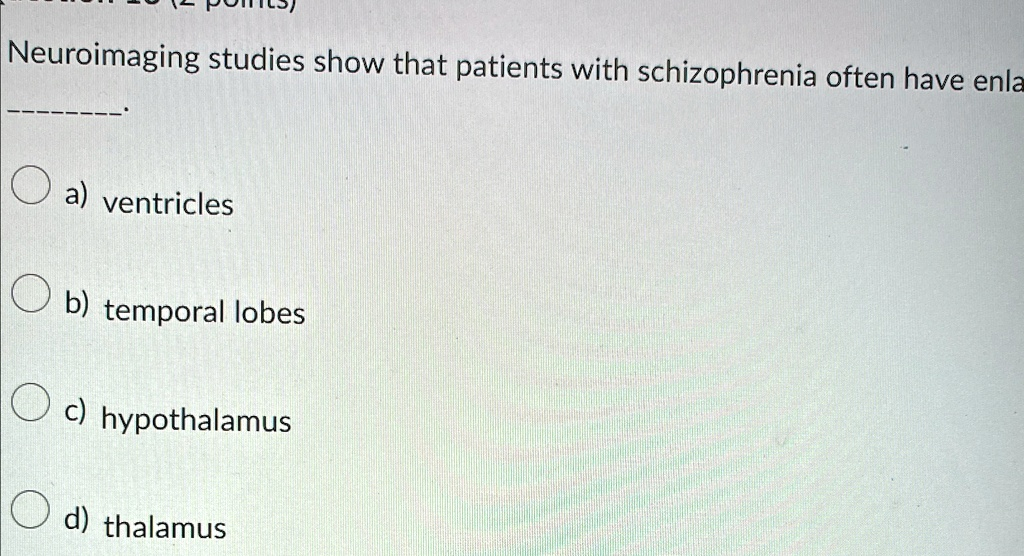Neuroimaging studies show that patients with schizophrenia often have enla a) ventricles b) temporal lobes c) hypothalamus d) thalamus
Neuroimaging studies show that patients with schizophrenia often have enla a) ventricles b) temporal lobes c) hypothalamus d) thalamus

The Correct Answer and Explanation is:
The correct answer is a) ventricles.
Explanation:
Neuroimaging research has provided significant insights into the structural brain changes associated with schizophrenia. One of the earliest and most consistently replicated findings is the enlargement of the cerebral ventricles in patients with the disorder compared to healthy controls. The ventricles are a system of interconnected cavities in the brain that produce and circulate cerebrospinal fluid (CSF), which helps cushion and protect the brain.
The enlargement of the ventricles, particularly the lateral and third ventricles, is generally understood to be an indirect measure of brain tissue loss, or cerebral atrophy. This phenomenon is described as ex vacuo enlargement, meaning the fluid filled spaces expand to fill the volume left by the reduction of adjacent brain tissue. This suggests that a core neuropathological process in schizophrenia involves the loss of brain cells and synaptic connections in key areas. The brain regions most often implicated in this volume reduction include the temporal lobes (especially the hippocampus and superior temporal gyrus) and the prefrontal cortex. The degree of ventricular enlargement has been correlated in some studies with the severity of negative symptoms, cognitive impairment, and a poorer long term prognosis.
While other brain structures listed are also affected in schizophrenia, they are not typically enlarged. The temporal lobes (b) and the thalamus (d) are crucial to understanding the disorder, but neuroimaging studies consistently show a reduction in their volume. These reductions are linked to symptoms like auditory hallucinations, thought disorder, and sensory processing deficits. The hypothalamus (c) is primarily associated with hormonal and autonomic regulation, and while its function may be dysregulated in schizophrenia, significant structural enlargement is not a characteristic finding. Therefore, enlarged ventricles remain the most accurate answer, representing a landmark discovery in the neurobiology of schizophrenia.thumb_upthumb_down
